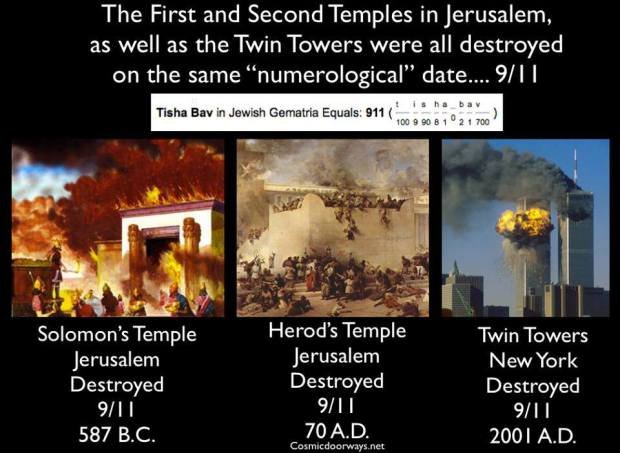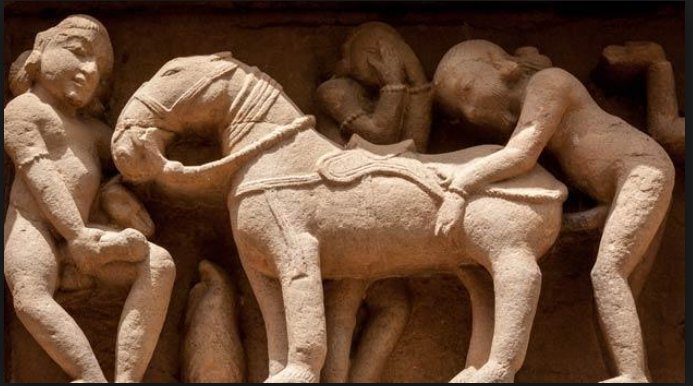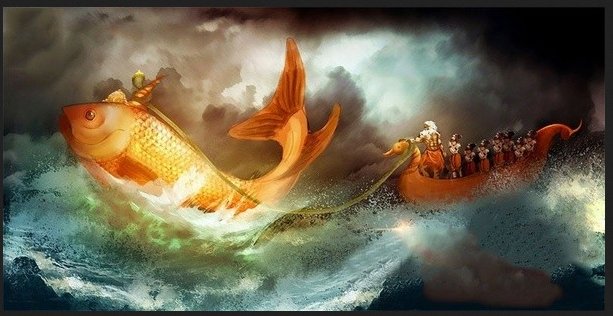Yoga and Karma are probably close rivals!
But what is Dharma? It is a term that is poorly understood despite much overuse.
If it’s the latter, what is this “way of life”?
Is Dharma “eternal” or “era specific”?
Is Dharma contextual or context-free?
Is Dharma synonymous with religion / faith or does it transcend religion?
Is Dharma “law”? Or is it merely a set of guidelines that are non-binding?
Be that as it may, this also begs the question -
Is Dharma “definable” even in Indian discourse? Or does it have multiple definitions?
Finally how does religion interact with Dharma?
Are Hindu ideas of Dharma vastly different from Buddhist or Jain conceptions of Dharma?
But the word itself is v ancient and goes all the way back to the Rig Veda. In the Rig Veda Samhita, the word is used as many as 56 times! So this is not a new fangled word
This would suggest that Dharma refers to a certain set of ideals that help maintain "order".
धर्मः तस्माद्धर्मात् परं नास्त्य् अथो अबलीयान् बलीयाँसमाशँसते धर्मेण यथा राज्ञैवम्
यो वै स धर्मः सत्यं वै तत् तस्मात्सत्यं वदन्तमाहुर् धर्मं वदतीति धर्मं वा वदन्तँ सत्यं वदतीत्य् एतद्ध्येवैतदुभयं भवति
"Nothing is higher than dharma. The weak overcomes the strong by dharma... Truly dharma is the Truth; Therefore, when a man speaks the Truth, they say, "He speaks the Dharma"; and if he speaks Dharma, they say, "He speaks the Truth!" For both are one"
While its definition is elegant, it is not entirely satisfactory. It does not entirely cover the etymological suggestion of "Dharma" as a "sustainer" of civilizational order in the Rig Veda.
Dharma is viewed as the choice of "Shreyas" over "Preyas'.
Doing the "right" thing over the "pleasing" thing.
Unlike the view in Brihadaranyaka which we encountered, MB offers a context-sensitive view of Dharma
"स्वधर्ममपि चावेक्ष्य न विकम्पितुमर्हसि
धर्म्याद्धि युद्धाछ्रेयोऽन्यत्क्षत्रियस्य न विद्यते
यदृच्छया चोपपन्नं स्वर्गद्वारमपावृतम्
सुखिनः क्षत्रियाः पार्थ लभन्ते युद्धमीदृशम्
"As a Kshatriya, your Swadharma is to fight a lawful war, and there is nothing that is superior to that. A warrior must be happy when encountered with an opportunity to wage a battle that will open the gate to heaven for the fighter"
श्रेयान्स्वधर्मो विगुणः परधर्मात्स्वनुष्ठितात्
स्वभावनियतं कर्म कुर्वन्नाप्नोति किल्बिषम्
सहजं कर्म कौन्तेय सदोषमपि न त्यजेत्
सर्वारम्भा हि दोषेण धूमेनाग्निरिवावृताः
"“It is better to perform one’s own dharma imperfectly than to perform another’s action very well. Performing one’s own dharma (as dictated by one’s innate “swabhava”), one does not accumulate guilt."
Duty is contextual and is specific to each person's station and circumstance
Hence the approach to Dharma can never be "one size fits all"
"Dharma and Adharma do not go around saying, "That is us." Neither do gods, nor gandharvas, nor ancestors declare what is Dharma and what is Adharma"
An acknowledgment of Dharma's enigmatic character.
There was always a certain strand in Indian thought that argued that while Dharma may be "contextual" there are certain aspects to Dharma that are context-free and eternal.
Sanatana Dharma meant "Eternal order" - contrast to the "context specific" notion of Dharma we were discussing this far, particularly in the Mahabharata.
So Dharma can be both eternal as well as contextual
"सत्यम् ब्रूयात् प्रियम् ब्रूयात् न ब्रूयात् सत्यमप्रियम् |
प्रियम् नानृतं ब्रूयात् एष धर्मः सनातनः ||
"Speak the truth. Speak Pleasantly. Never speak the truth that is unpleasant. Nor be pleasant at the expense of the truth. This is the eternal law (Sanatana Dharma)"
These aspects are not necessarily contextual. These are eternal.
Exoteric : speaking to its own times
Esoteric : speaking profound truths for eternity ; truths that don't get dated
"धर्म एव हतो हन्ति धर्मो रक्षति रक्षितः ।
तस्माद्धर्मो न हन्तव्यः मानो धर्मो हतोवाधीत् ॥
"Dharma, when destroyed, destroys; Dharma protects when it is protected.
Therefore Dharma must not be violated, Otherwise violated Dharma destroys us"
It is worth studying Patanjali in this regard, who wrote his famous Yoga Sutras circa 200-400 AD.
Yamas -
Ahimsa (Non violence)
Satya (Abstinence from falsehood)
Asteya (Non stealing)
Brahmacharya (Celibacy)
Aparigraha (Non-avarice)
Śauca (purity)
Santosha (contentment)
Tapas (austerity / meditation)
Svadhyaya (self reflection / study)
Isvara Pranidhana (contemplation of God)
Dharma is now increasingly studied from a reflective standpoint - with a focus on personal growth
in contrast to Dharma in the Gita (some 800 years earlier) where it is more worldly and contextual
Gandhian thought owes a great deal to the Yamas and Niyamas of Patanjali.
How did Dharma stack up against the other aspects of life in Indian thought?
Purushartha is a word that comes up very early in Indian lit - as per which Dharma is only one of the 4 goals of a well led life (Artha, kama & Moksha being others)
Dharma is paramount, and trumps Artha and Kama.
Vatsyayana is one of those rare Indian minds who explicitly distinguishes between Dharma and Adharma.
Dharma / Adharma of mind
Dharma / Adharma of words
Dharma / Adharma of body
This is a remarkable vote in favor of Dharma from the philosopher of love himself!
The answer is yes. This is best summed up by the well known, yet controversial, phrase - "Varnashrama Dharma"
Partly because modern liberalism privileges"individual liberty" as the highest ideal, and this conflicts with the Hindu view that there is a "time and place for everything"
Is this consistent with Ashrama Dharma? In my view, no.
Is the kind of union described in Cheeni Kum sustainable for the society at large? Perhaps not.
Here's a fine instance where modern liberal morality conflicts with Dharmic morality. Ofcourse there are other instances.
These are two totally different takes on how to approach life.
How do we preserve Dharma? How do we balance it against the ideal of individual liberty (which has its charm, while being adharmic).
How do we have the cake and eat it too?
Post script : This thread was focused on Hindu ideas of Dharma. I have not discussed notions of Dharma in Buddhism. Nor the conflicts between those ideas and the HIndu understanding
That calls for a separate thread by a different person
Thanks for pointing out







